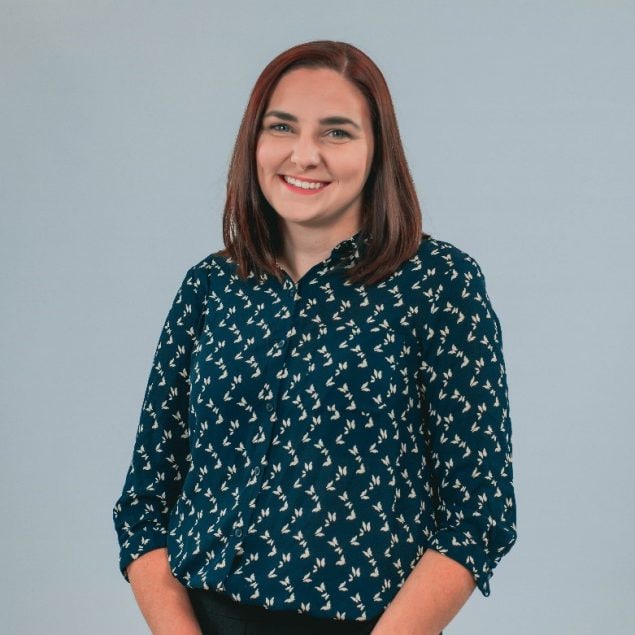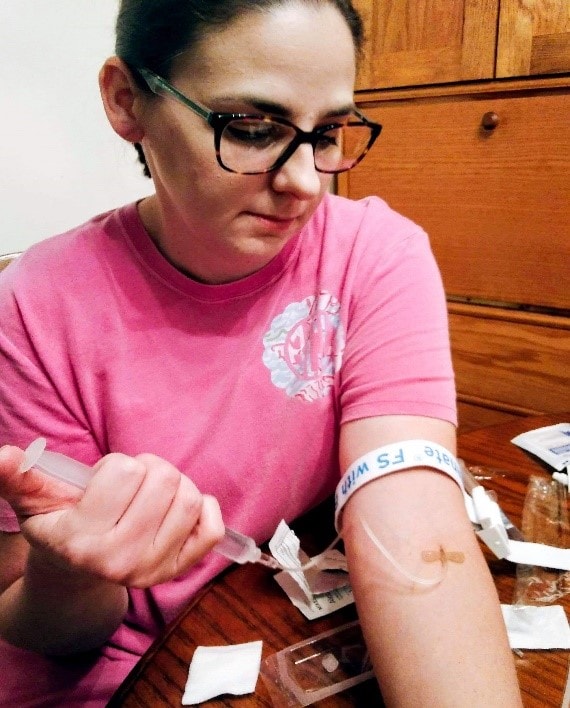Real Stories from People Living with VWD: Brandee Cookson
Brandee Cookson’s Story

Brandee Cookston, a 34-year-old woman, learned she had von Willebrand disease (VWD) type 3 at age 12, after experiencing extremely heavy periods. According to Brandee, when she started her menstrual cycle, it never stopped. “It was extremely heavy, so my parents took me to my pediatrician, and she ran a bunch of tests and said that she was going to have to refer me to a hematologist (a doctor that specializes in diseases related to blood) because she thought I had VWD, which I did. It was a surprise.”
Two years before Brandee was diagnosed, her brother passed away from ITP (idiopathic thrombocytopenic purpura), another blood-related condition. However, to Brandee’s knowledge, no one else in her family has been diagnosed with a bleeding disorder.
Treatment
Brandee’s care is currently managed by an adult care provider who also runs the local HTC. Finding a treatment plan that worked well was initially challenging for Brandee and involved a lot of trial and error. “The first medicine they put me on was DDAVP [desmopressin, a medication used for bleeding disorders], which, if you know, doesn’t work for type 3 patients. It didn’t control the bleeding. They put me on birth control pills – several different types – that didn’t control the bleeding. Then, we finally ended up switching to another type of medicine called Humate-P, which was a godsend because it worked so well. The bleeding completely stopped for a little bit. I didn’t have as many bleeding episodes or breakthrough bleeds. Once I switched to Humate-P, my life got a lot better.”

Brandee Infusing Factor into her vein
In addition to finding the right medicine, Brandee has also had trouble administering the medicine into her veins. Over the years, she’s had to switch between traditional infusions and ports in an effort to get her medicine. “I had to have a port placed because I got stuck over 32 times one day to get a treatment. I had a paramedic and two nurses try to administer my medicine trying to get a vein. After that, I went with a port. Over the years, I’ve had countless ports. My body always seems to reject them. We’re back to using my veins now. They still aren’t great, so it takes me or my home health nurse a few tries.”
Challenges
In addition to the treatment challenges, Brandee also had a hard time growing up with VWD because she felt she missed out on opportunities at times, like when she couldn’t go to youth camp for fear she might have her period that week and wouldn’t know how she would manage it. It was also hard to be unable to participate in all the same activities as other kids her age. For example, many people often told her she couldn’t take part in certain sports, like contact sports, for fear she would get a bleed. “When I was first diagnosed, they really did want to put me in a plastic bubble – ‘don’t touch her,’ ‘don’t let her do this.’ It wasn’t really my family, it was the school system or other people who didn’t really understand. They thought I was a porcelain doll and that I was going to break. They were scared.”
Even things that most people take for granted, like going to the fair and riding the rides, were off limits, and “extreme” sports and activities were strictly forbidden. “I know a lot of my friends were able to go and do extreme things – like they can go ice skating, play paintball, or different games – growing up [things] that teenagers like to do. I had to think a lot before I could join in and do anything. I never got to play paint ball. I did go ice skating, but I paid for it. It’s so hard on your joints. So, I’ve just had to try to change my interests. I can’t be so ‘extreme.’ To a lot of people, it’s not extreme, but to me, it’s extreme.”
Today, Brandee wants people to know that she “can pretty much do any and everything with limitations.” If she wants to do something that’s a little more dangerous, she can pre-treat herself to prevent a bleed from happening.
Resources/Access to Information
For Brandee, her greatest source of information and support, other than her doctors and home health agency, has been other patients in the bleeding disorders community with VWD or hemophilia. “I think the only people I really talked to and had a connection with was the home health agency – who took me in and treated me like their best friend. I could call them day or night. They would have retreats with VWD and hemophilia patients, where we could share our stories and just be ‘normal’ teenagers. They would also get the families together quarterly so that we could all reconnect and share any recent challenges. I was really grateful for that community, and I still am, because I’ve met so many people – great friends – that are friends for life now. Even in the waiting rooms at the hemophilia treatment centers (HTCs), you connect with so many other families from the community that you didn’t know had a blood disorder. It was a small community when I was first diagnosed, but now I know a very large community with bleeders from all over the world.”
Community Involvement
Brandee is very involved in the bleeding disorders community. She attends VWD conferences, is involved in the VWD Connects Foundation, shares information about VWD on social media through pages like Southern Girls Bleed, and has served on pharmaceutical company patient-advisory boards. “I’m a member of several VWD groups where we come together, share stories, ask for advice, and just lean on one another for support.”
Advice for Others
When asked what advice Brandee would like to share with others, she said, “There are going to be some bruises and bleeds along the way, but this is a manageable disorder with the right treatment plan. Get involved with your local chapter, join a social media group, and always speak up for yourself. If you don’t, who will?”
And for the parents out there, Brandee wants you to know that “you’ve got this! You’re going to find the right treatment plan that works for your child. Find a support system, families who are going through the same challenges as you. Lastly, let them be kids.”
CDC thanks Brandee for sharing her story.
